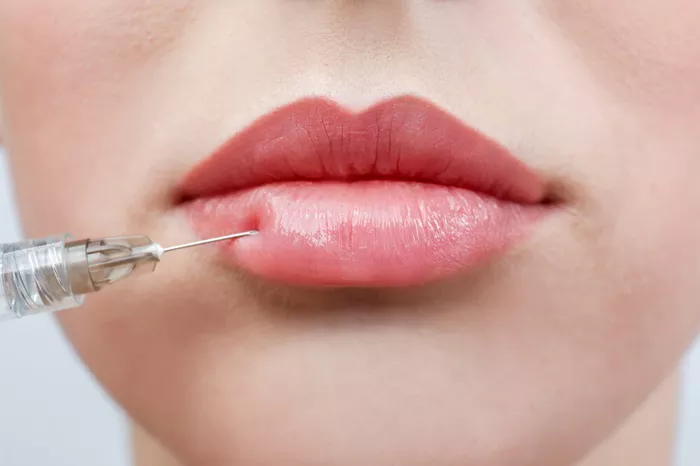Lip dermal fillers are a popular cosmetic procedure designed to enhance the volume and shape of the lips. They are used to create fuller, more defined lips, and can also help reduce the appearance of fine lines around the mouth. If you’re considering this treatment, one of the most common questions is: How long do lip dermal fillers last?
This comprehensive guide will cover various aspects of lip dermal fillers, including their longevity, factors that influence their duration, and what you can expect after getting them.
Understanding Lip Dermal Fillers
What Are Lip Dermal Fillers?
Lip dermal fillers are injectable substances used to add volume to the lips. They are typically made from hyaluronic acid, a naturally occurring substance in the body that helps maintain skin hydration and elasticity. Other types of fillers may include calcium hydroxylapatite or poly-L-lactic acid.
How Do They Work?
When injected into the lips, these fillers bind with water molecules to increase volume and smoothness. They also stimulate collagen production, which contributes to the overall appearance and texture of the lips.
Longevity of Lip Dermal Fillers
Typical Duration
On average, lip dermal fillers last between 6 to 12 months. The exact duration can vary depending on several factors. Some fillers may last a bit longer or shorter, depending on the type and the individual’s response to the treatment.
Types of Fillers and Their Longevity
Hyaluronic Acid Fillers: These are the most common and generally last between 6 to 12 months. Examples include Juvederm and Restylane.
Calcium Hydroxylapatite Fillers: These tend to last longer, typically around 12 to 18 months. Radiesse is an example of this type.
Poly-L-Lactic Acid Fillers: Known for their longevity, these fillers can last up to 24 months. Sculptra is a common brand.
Factors Influencing Filler Longevity
Type of Filler
As mentioned, different types of fillers have varying durations. The composition and gel consistency of the filler play a significant role in how long it remains effective.
Individual Factors
Metabolism: Individuals with a faster metabolism may find that their fillers break down more quickly.
Lifestyle: Factors such as smoking, excessive alcohol consumption, and exposure to sunlight can affect filler longevity.
Skin Type and Condition: Those with more active skin or higher oil production may experience faster filler absorption.
Treatment Area
The lips are a dynamic area with frequent movement, which can contribute to faster breakdown of fillers. Areas with less movement may retain fillers longer.
See also: What To Do For Lines Around Lips?
Maintenance and Touch-Ups
Regular Touch-Ups
To maintain the desired appearance, touch-up treatments may be necessary. Most people choose to have a touch-up every 6 to 12 months to keep their lips looking full and youthful.
Signs That It’s Time for a Touch-Up
Loss of Volume: If your lips start to look less plump than desired.
Uneven Texture: If you notice irregularities or unevenness in the lip area.
Fading Effects: When the enhanced effect of the fillers starts to diminish.
What to Expect After Treatment
Initial Results
Immediately after the procedure, you may notice some swelling and redness. These effects typically subside within a few days.
Long-Term Results
Over the next few weeks, the filler will settle into the lips, and you will see the final results. Your lips should appear fuller, smoother, and more defined.
Possible Side Effects
While lip dermal fillers are generally safe, there can be side effects. These may include bruising, swelling, and tenderness. In rare cases, more serious complications can occur, such as infection or filler migration.
Choosing the Right Filler
Consultation with a Specialist
Before undergoing the procedure, it’s essential to consult with a qualified and experienced cosmetic specialist. They can help determine the best type of filler for your needs and expectations.
Considering Your Goals
Discuss your aesthetic goals and any concerns you may have. This will help the specialist choose the right filler and treatment plan for you.
Conclusion
Lip dermal fillers are a popular and effective way to enhance lip volume and appearance. While the typical duration of these fillers ranges from 6 to 12 months, several factors can influence how long the effects last. By understanding these factors and working with a skilled specialist, you can achieve the best results and maintain your desired look.
If you have any questions or need personalized advice, consult with a cosmetic professional to ensure you make the best decision for your beauty and health.
FAQ on Lip Fillers
1. Do lips go back to normal after fillers?
Yes, lips generally return to their natural state once the filler dissolves, typically within 6-12 months, depending on the type and amount used.
2. Can lip fillers last longer than 2 years?
Most lip fillers last between 6 months and 18 months. Fillers may last longer in some cases, but 2 years is less common.
3. What is the longest lasting lip filler?
The longest-lasting lip fillers are typically made from poly-L-lactic acid or calcium hydroxylapatite, which can last up to 18-24 months.
4. Are lip fillers worth it?
Whether lip fillers are worth it depends on individual preferences and goals. They can enhance lip volume and shape, but considerations like cost, maintenance, and potential side effects are important.
5. Do lip fillers ruin your lips over time?
If used responsibly, lip fillers generally do not ruin your lips. However, frequent treatments or overuse may cause changes to the lip tissue.
Related topic:
How long after rhinoplasty can I get lip fillers?
How much do nose fillers cost philippines?

